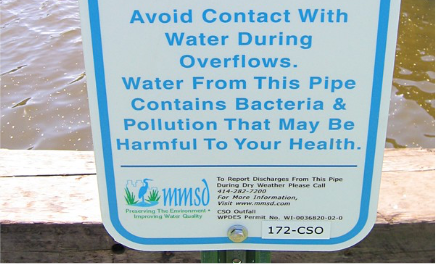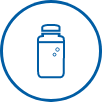Water samples are collected just below the stream surface to measure water chemistry and determine if toxins are present. Bacteria samples are also collected near the stream bank, where people are likely to be exposed while swimming or fishing. All samples are sent to laboratories for analysis.
How are these data used?
Water samples are used to collect data for four chemical and two human health indicators.

Enterococci bacteria live in the intestinal tracts of warm-blooded animals, including humans. They are used as an indicator of fecal contamination from wastewater treatment plants, septic systems or runoff from stormwater or pastures. Their presence in the environment indicates that other disease-causing microbes may be present.
Where are enterococci samples collected?
last, at the upstream
end.

To learn more, see the
NRSA Field Operations Manual.




